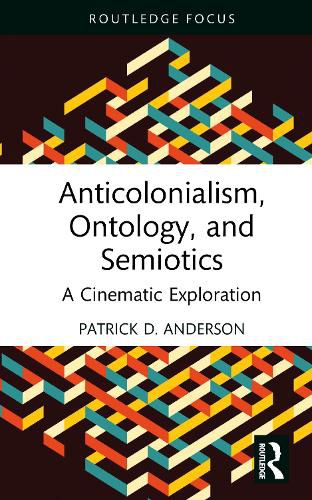Readings Newsletter
Become a Readings Member to make your shopping experience even easier.
Sign in or sign up for free!
You’re not far away from qualifying for FREE standard shipping within Australia
You’ve qualified for FREE standard shipping within Australia
The cart is loading…






Anticolonialism, Ontology, and Semiotics places anticolonial theory, semiotic analysis, and contemporary Hollywood film into conversation.
Synthesizing Algirdas Greimas' semiotic square with the theories of anticolonial philosophers like Frantz Fanon, Eldridge Cleaver, and Sylvia Wynter, Anderson reconstructs an anticolonial social ontology for use as a method of film analysis. Using this ontology to interpret a wide range of films, the book defies the assumptions and challenges the conclusions of postcolonial and intersectional approaches. Reaching beyond the application of anticolonial theory for the purpose of film criticism, the book uses theory to interpret film while using film to illustrate and interpret theory. Along the way, readers are challenged to reconsider class, race, gender, sexuality, violence, and liberation not only in the cinematic world but also in the worlds we all inhabit.
This concise yet broad-reaching work will interest scholars and students of film studies, film philosophy, anticolonialism and postcolonialism, race and gender studies.
$9.00 standard shipping within Australia
FREE standard shipping within Australia for orders over $100.00
Express & International shipping calculated at checkout
Stock availability can be subject to change without notice. We recommend calling the shop or contacting our online team to check availability of low stock items. Please see our Shopping Online page for more details.
Anticolonialism, Ontology, and Semiotics places anticolonial theory, semiotic analysis, and contemporary Hollywood film into conversation.
Synthesizing Algirdas Greimas' semiotic square with the theories of anticolonial philosophers like Frantz Fanon, Eldridge Cleaver, and Sylvia Wynter, Anderson reconstructs an anticolonial social ontology for use as a method of film analysis. Using this ontology to interpret a wide range of films, the book defies the assumptions and challenges the conclusions of postcolonial and intersectional approaches. Reaching beyond the application of anticolonial theory for the purpose of film criticism, the book uses theory to interpret film while using film to illustrate and interpret theory. Along the way, readers are challenged to reconsider class, race, gender, sexuality, violence, and liberation not only in the cinematic world but also in the worlds we all inhabit.
This concise yet broad-reaching work will interest scholars and students of film studies, film philosophy, anticolonialism and postcolonialism, race and gender studies.